
1
Fifth stage
Surgery
(orthopedics)
Lec-3P1
.د
مثنى
18/10/2016
Infection
• Acute haematogenus osteomyelitis.
• Subacute haematogenous osteomyelitis.
• Chronic osteomyelitis.
• Post-traumatic and post operative Osteomyelitis.
• Acute suppurative arthritis.
• Septic bursitis.
•
Tuberculosis.
Duration:
– acute (less than 2 weeks),
– Subacute ( 2-6weeks)
– chronic (>6 weeks)
Acute haematogenus osteomyelitis.
• Inflammation of the bone and its content.
• Acute pyogenic infections:
• are characterized by formation of pus (concentration of defunct leukocytes, dead
and dying bacteria and tissue debris.).
• which is often localized in an abscess.
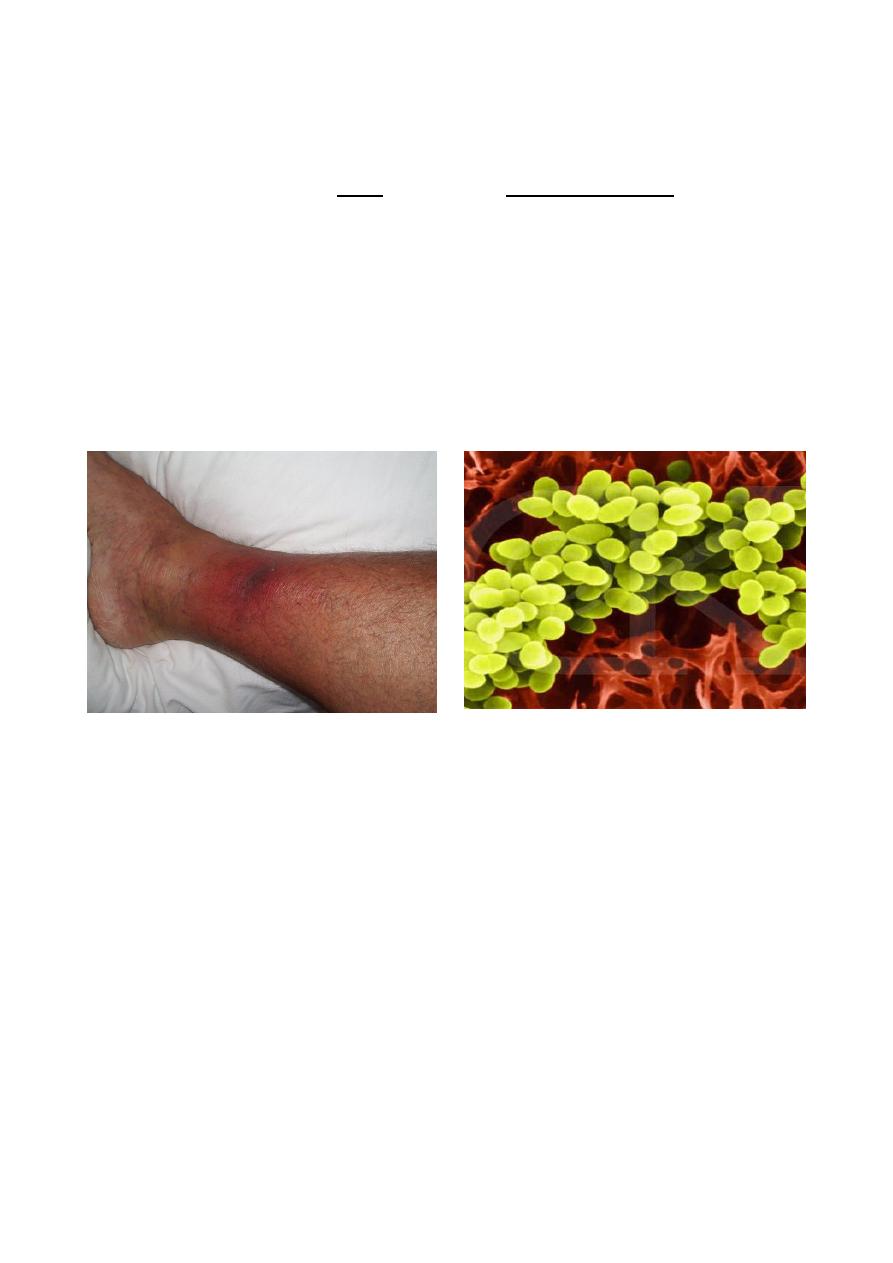
2
A O M :
is almost invariably a disease of children.
• When it is occurring in the adult there may be predisposing factor:
low resistance due to debility disease (diabetes).
Or drug(immunosupression ).
Causative organism
• The causal organism is usually :
Staphylococcus aureus.
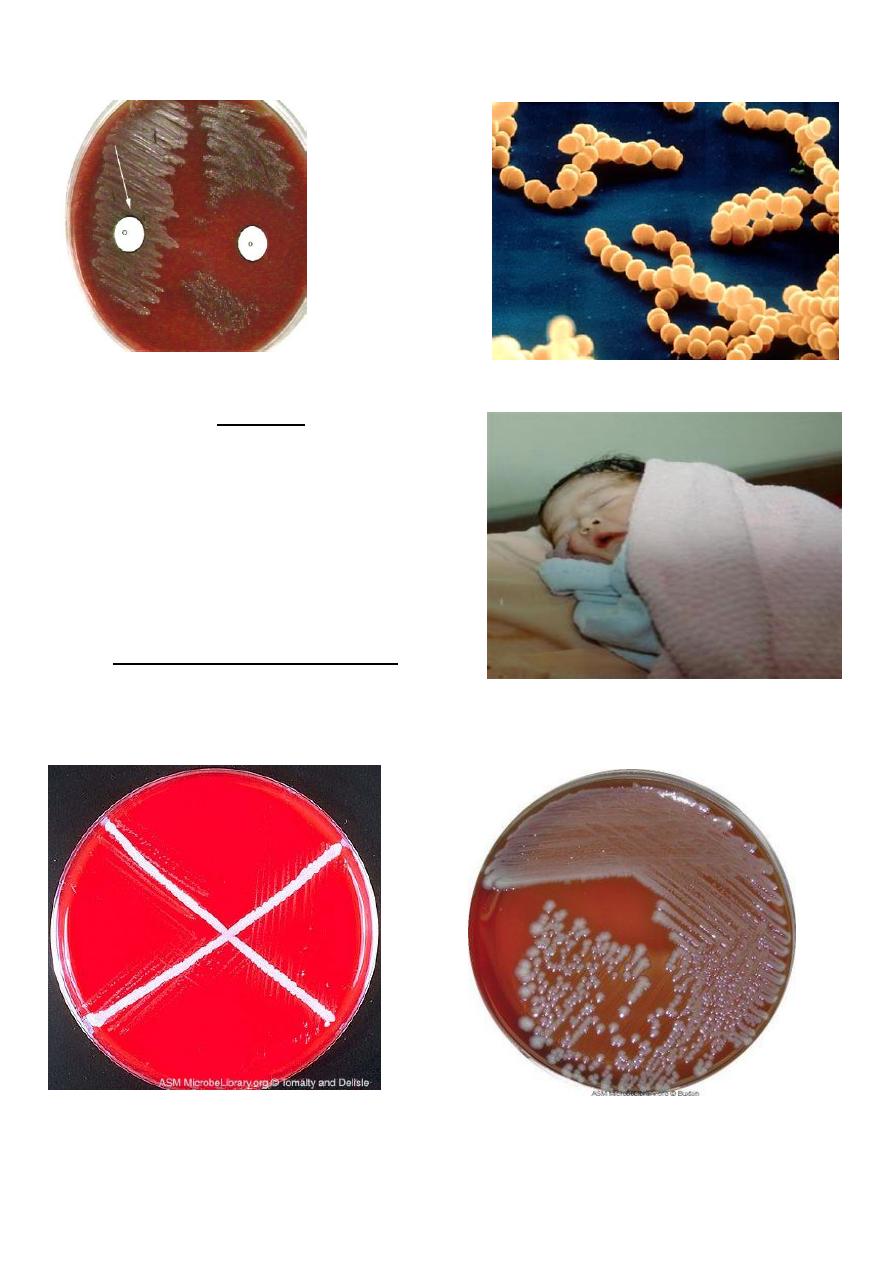
3
streptococcus pyogenes ,strep.pnenmoniae.
• In children > 4 years age:
• Haemophilus influenza,
• E.Coli,
• pseudomonas aeruginosa
• proteus miribilis and
• anaerobic bacteriods fragilis.
• salmonella in sickle cell infection.
Route of entry:
Haemophilus influenza
E.Coli
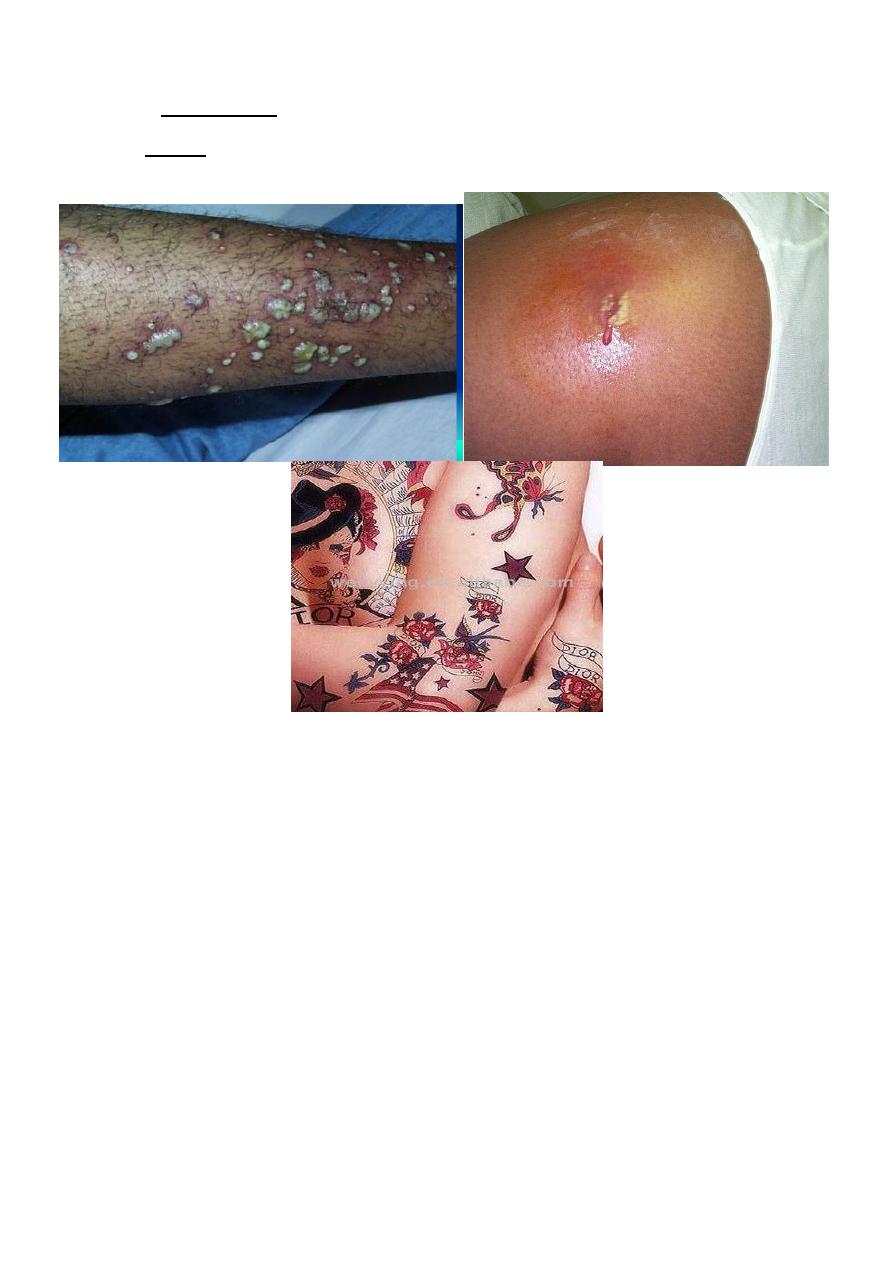
4
• Infection may reach the bones and joints via
1.The blood stream from the distant site (boil, tooth infection).
2.Or direct invasion from skin puncture.
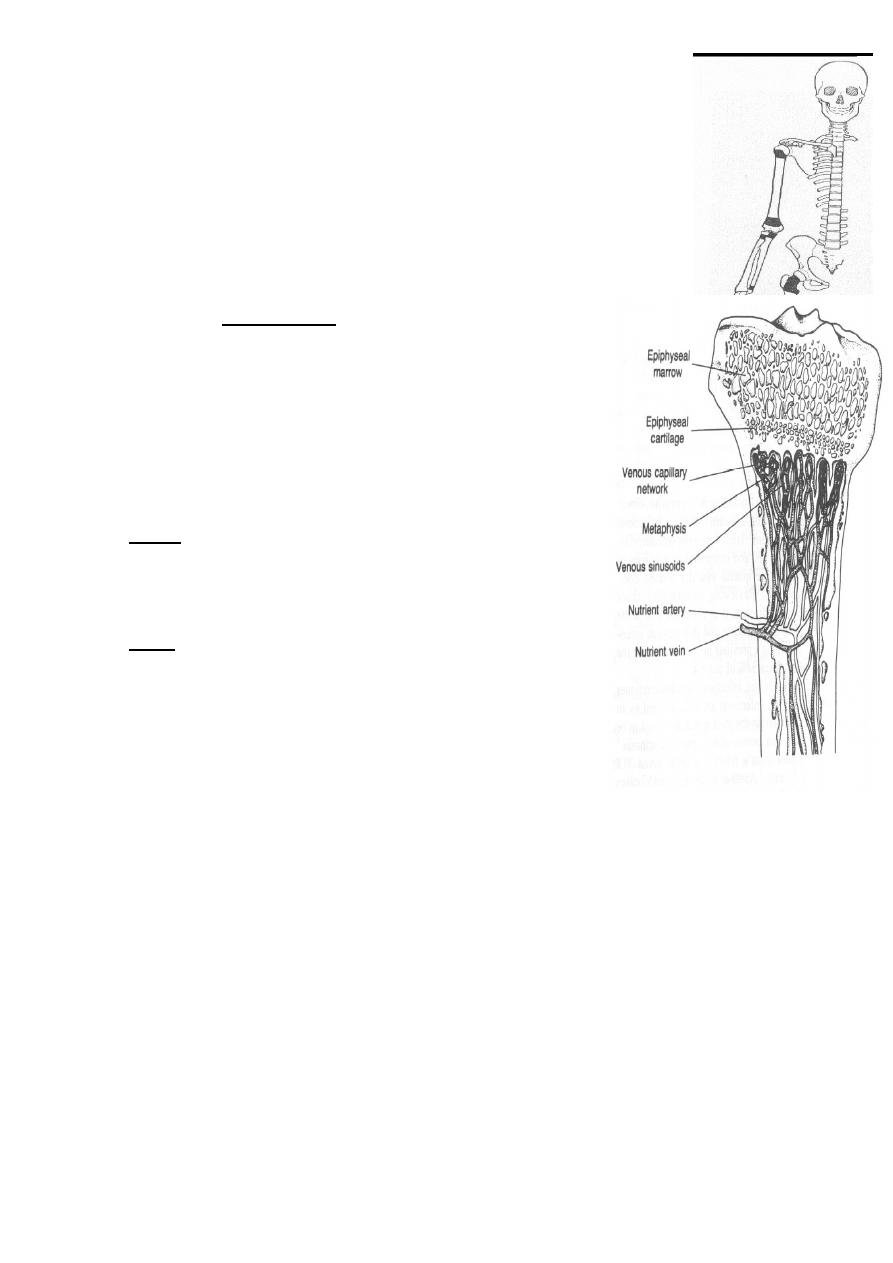
5
Pathology
The most common site is the metaphysis of the long bone
particularly around the knee joint.
There are peculiar arrangements of the blood vessels in that area
:
the non –anastomosing terminal branches of the nutrient
artery twist back in hairpin loops arrangements of capillaries
slow down the rate of blood flow before entering the large
network of sinusoidal veins
• The relative
vascular stasis favors bacterial colonization.
• In infant
there is still a free anastomosis between metaphyseal
and epiphyseal blood vessel.
• In adult
haematogenous infection is more common in the
vertebra than in long bones
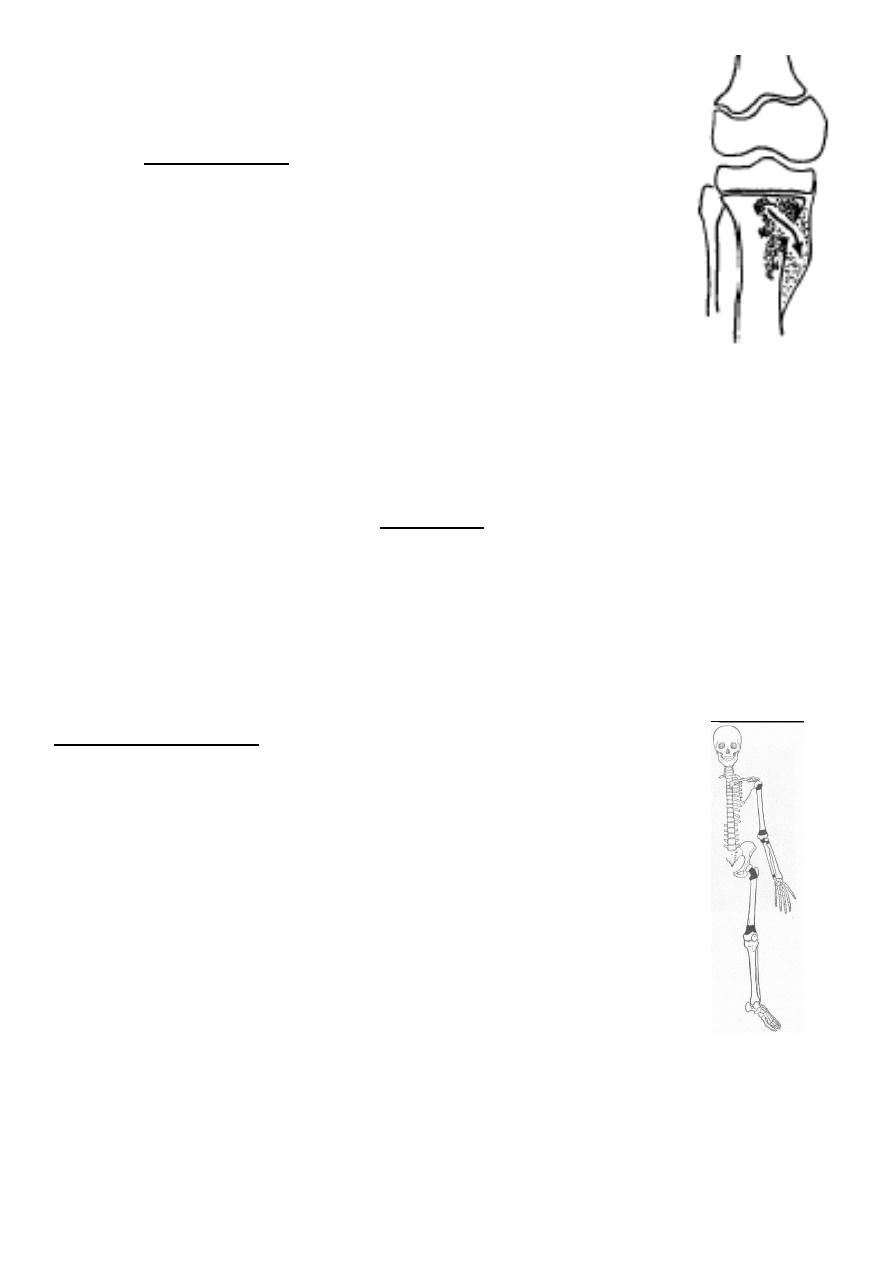
6
• The sequence of the pathological changes as follow.
Inflammation.
Suppuration during (2,3 days).
Necrosis due to increasing (intraosseous pressure ).
• vascular stasis .
• infective thrombosis.
• and periosteal stripping increasing compromise the blood supply, by the end of a
week there is usually evidence of necrosis.
• Pieces of bone may separate as SEQUESTRA which act as a foreign body causing
Persistant discharge through a sinus until they removed.
• Finally, it may through the skin to the surface and form a chronic sinus becoming a
persistent sinus tract or cloacae.
• reactive new bone formation
• resolution, healing.
Location of infection
• Children : primarily in the long bones
(femur, tibia, fibula, humerus).
• Adults :(50-60s) - primarily vertebrae.
• Neonates : have multiple bone infectious sites
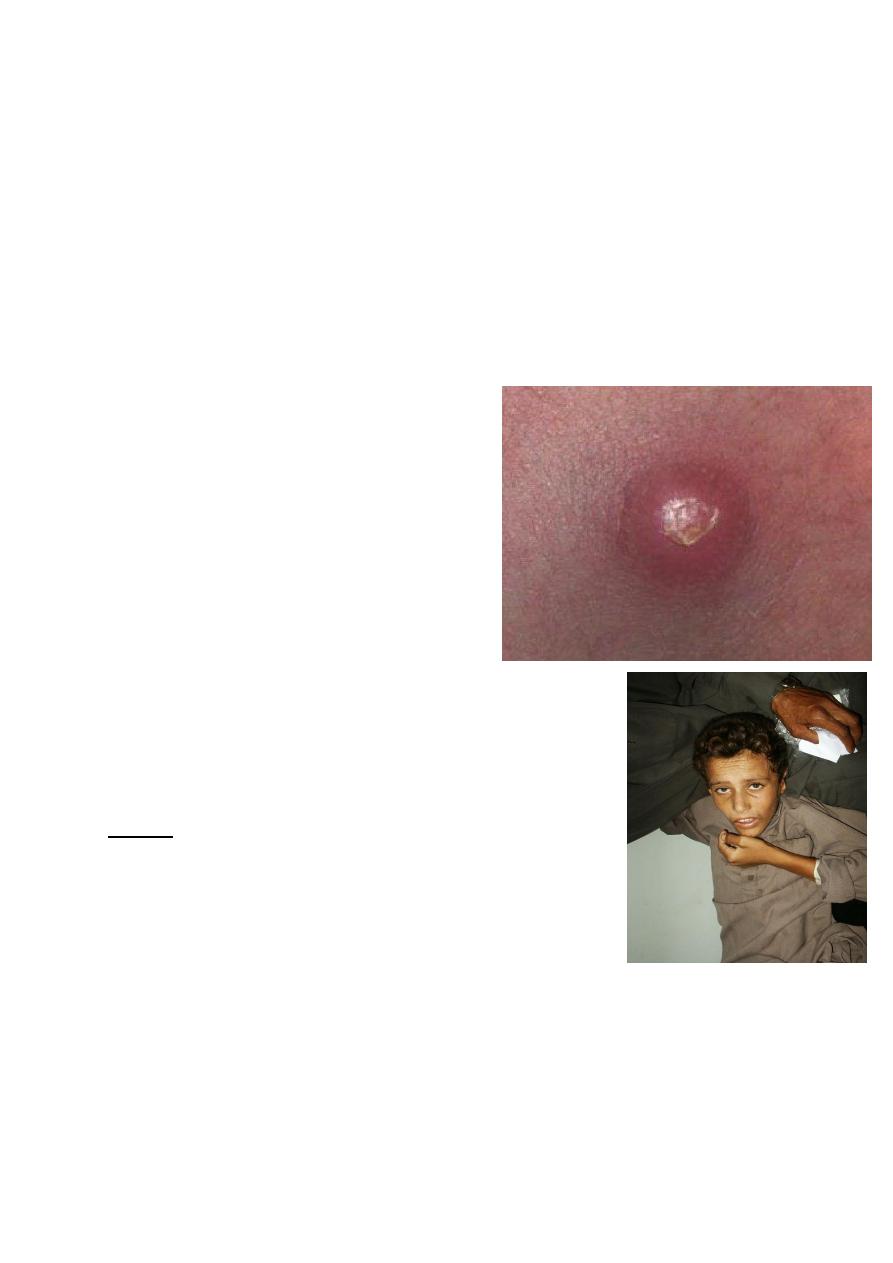
7
Clinical features history
• The onset is rapid and attacks in short time.
• The patient, usually a child or adolescent,.
• complains a severe pain in a limb, and the pain is not relieved by rest.
• A complete history and physical examination are required to search for possible
primary foci of infection.
• There may be some minor injury or insignificant infective lesion such as boil sore
throat a few days earlier
The general symptoms of toxemia:
• ①severe acute illness appear
• ②irritable and restless
• ③high fever, chill
• ④rapid pulse, nausea, vomiting etc
local signs
• caloric, rubor, dolor, tumor.
• Heat, red, pain or tenderness, swelling.
• Initially, the lesion is within the medually cavity, there is
no swelling, soft tissue is also normal.
• The merely sign is deep tenderness.
• Localized finger-tip tenderness is felt over or around the metaphysis.
• it is necessary to palpate carefully all metaphysic areas to determine local
tenderness.
• pseudo paralysis .
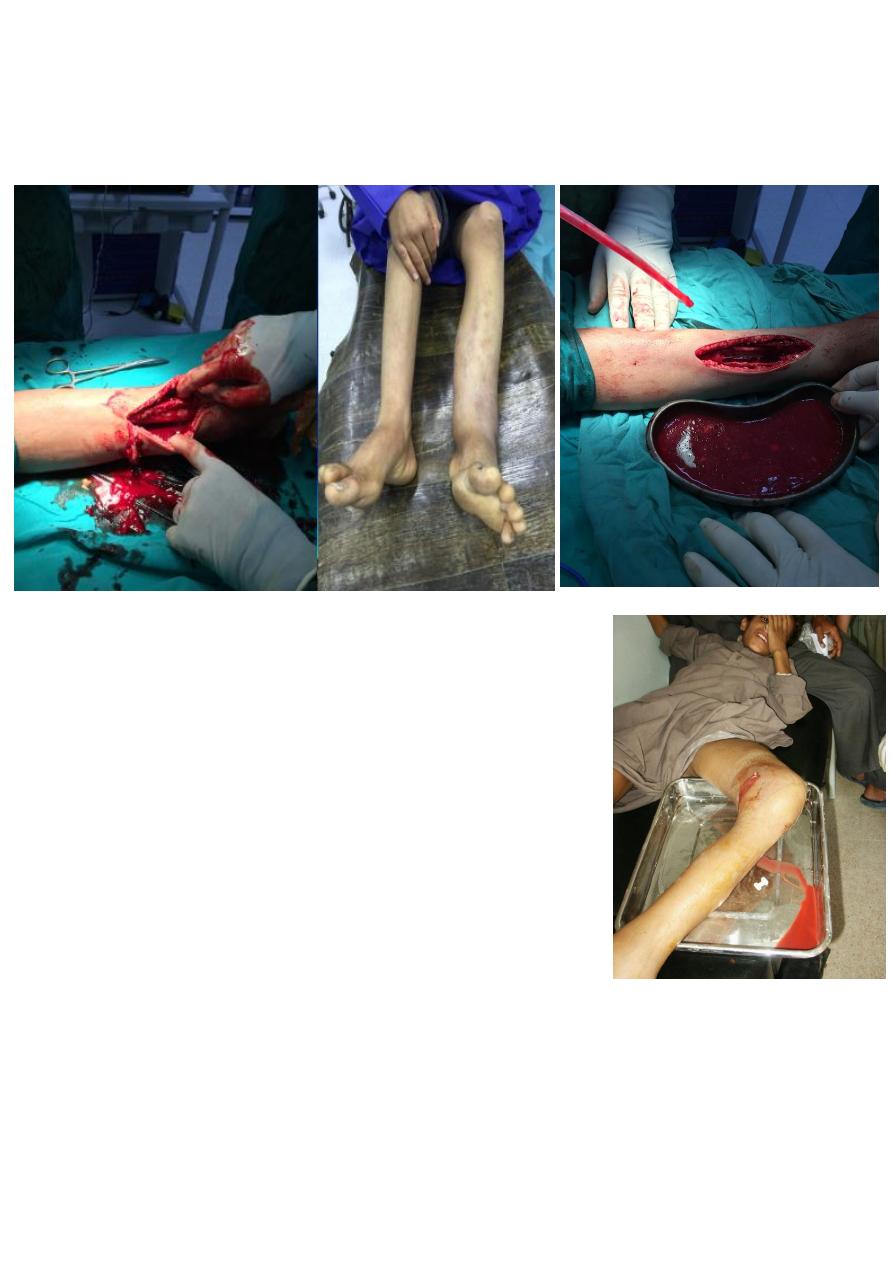
8
Subperiosteal abscess formation
• Edematous, red and fluctuation
• indicating Subperiosteal abscess formation.
• As the Subperiosteal abscess formed, signs of
inflammation followed rapidly.
• The extremity is held in semiflexion.
• Surrounding muscles are in spasm .
• Passive movement is resisted
• An increase effusion in the adjacent joint proves in most
cases to be a sympathetic synovitis with sterile clear
fluid.
• Hydroarthrosis should not be confused with septic
arthritis.
• It is important to remember that the metaphysis lie within the joint capsule of the
hip, shoulder, ankle.
• Therefore these joints can develop septic arthritis by extension of Osteomyelitis.
• If the infection and septicemia proceeded unabated, the patient may have toxic
shock syndrome.
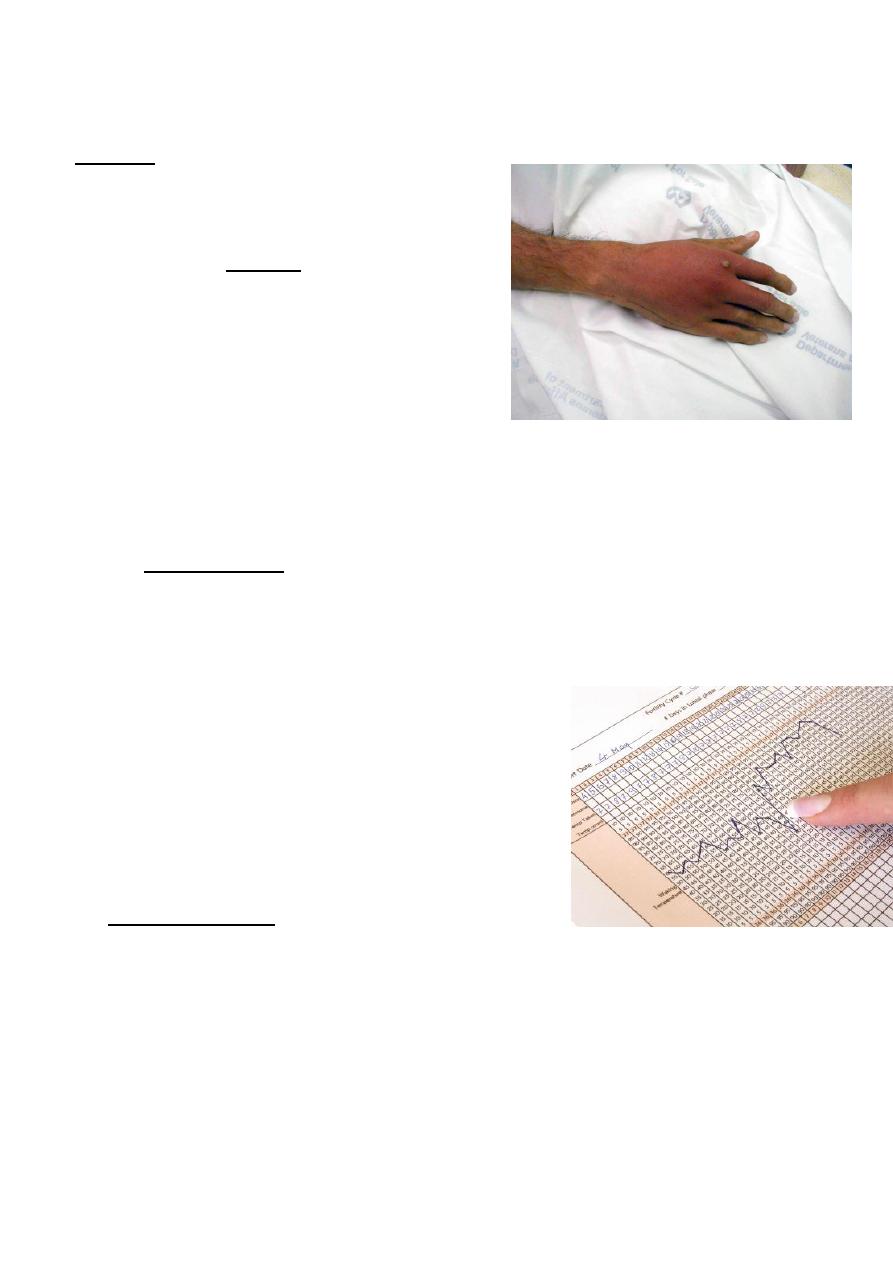
9
Differential diagnosis:
1. Cellulites
(wide spread superficial redness and
lymphangitis).
2.Acute suppurative arthritis.
3.Acute rheumatism (flitting joint pain).
4.Sickle-cell crisis.
5.Gauchers’ disease.
Laboratory findings:
• The white blood cell count will show a marked leulocytosis as high as 20,000 or
more.
• The blood culture demonstrates the presence of bacteremia, the blood must be
taken when the patient has a chill, especially when there is a spiking temperature.
• Aspiration.
The point of maximal tenderness should be
aspirated with a large-bore needle.
• Any material aspirated should be gram stained and
cultured to determine the sensitivity to antibiotics.
• C - reactive protein :
is specific for the diagnosis with high reading.
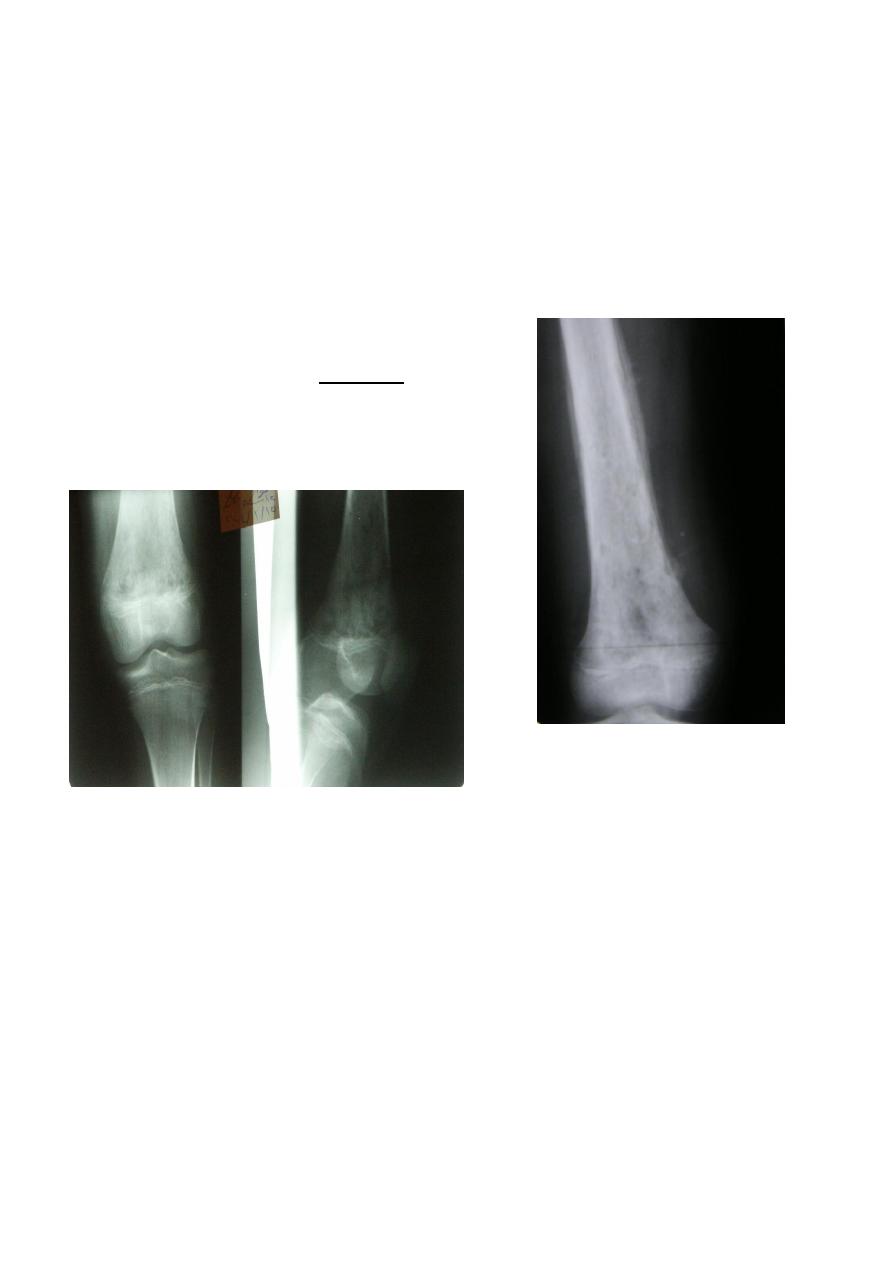
11
X-ray finding:
• x-ray films are negative within 1-2 weeks,
• Although carefully comparison with the opposite side may show abnormal soft tissue
shadows.
• It must be stressed that x-ray appearances are normal in the acute phase. There are
little value in making the early diagnosis.
• Radiography not appear till after 3 weeks.
1. decrease bone density moth eaten.
2. later on new bone formation.
Early diagnosis depends on followings:
1. severe acute illness, rapid onset and toxemia.
2. local severe pain and unwillingness to move limbs.
3.deep tenderness.
4.WBC count is as high as 20,000 or more .
5.Every effort must be made to obtain a bacterial culture and determinate the sensitivity to
antibiotics.
• Tc99m scanning.
• CT or MRI.
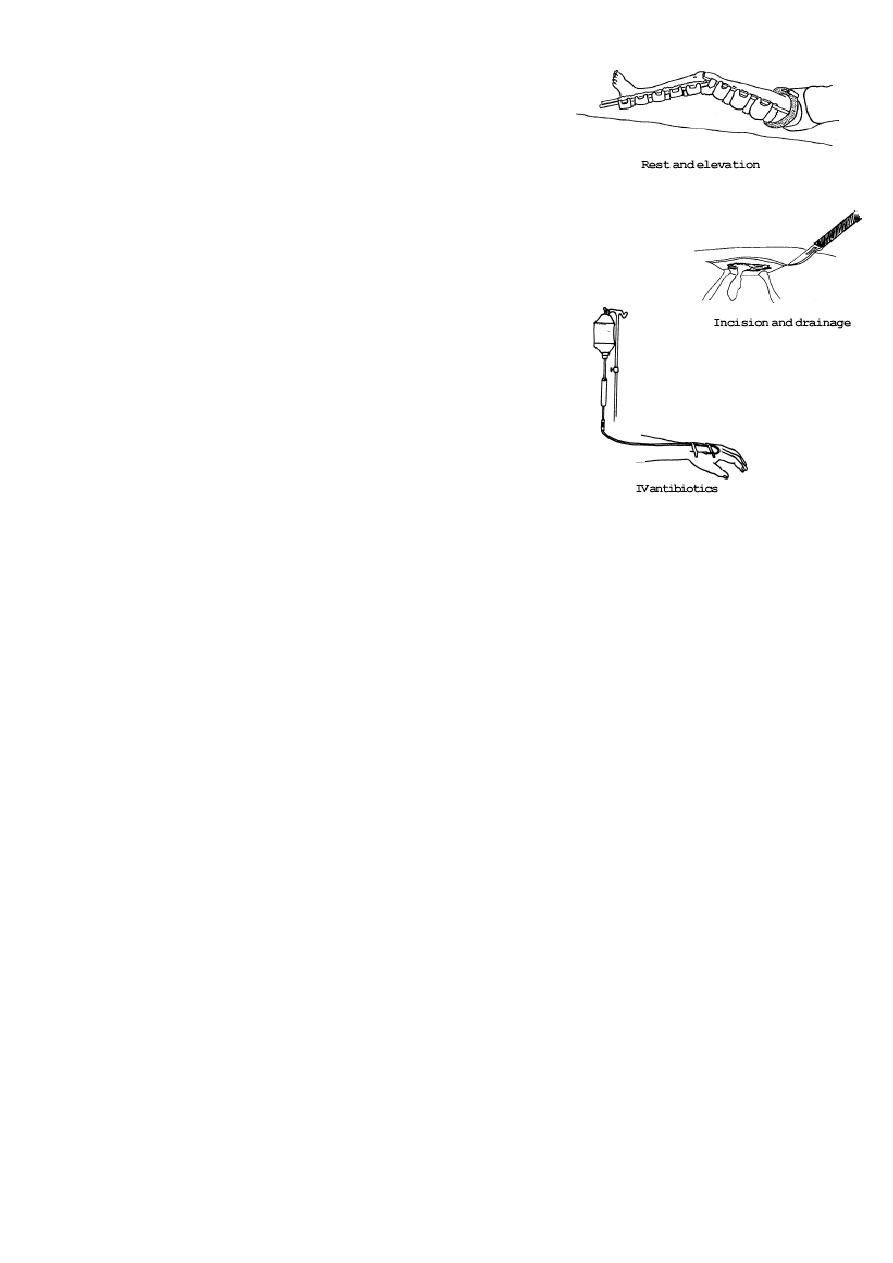
11
Treatment
1.General treatment:
nutritional therapy or general supportive treatment by
intaking enough caloric, protein, vitamin etc.
2. antibiotics therapy.
3.surgical treatment .
4.immobilization .
Antibiotics therapy
• The prompt administration of antibiotics is so vital that the result need not be
waited, usually using wide-spectrum antibiotics, even by intravenous administration
during the first 1-3 days.
• The choice of antibiotics may subsequently be modified according to culture,
sensitivity results, and clinical response.
• The treatment should be continued for at least 2 weeks after the body temperature
is down to the normal in order to minimize the possibly of reoccurrence.
Surgical treatment
• As any infection in a closed space, immediate provision of drainage is of paramount
importance.
• This must be done at earliest possible opportunity even before signs of
Subperiosteal abscess is evident.
• To wait is to invite disaster.
• Surgery is indicated when there has been no response to vigorous antibiotics
treatment after 48-72 hours.
• Surgery is achieved by making a window in the bone cortex to decompress rather
than debridement.
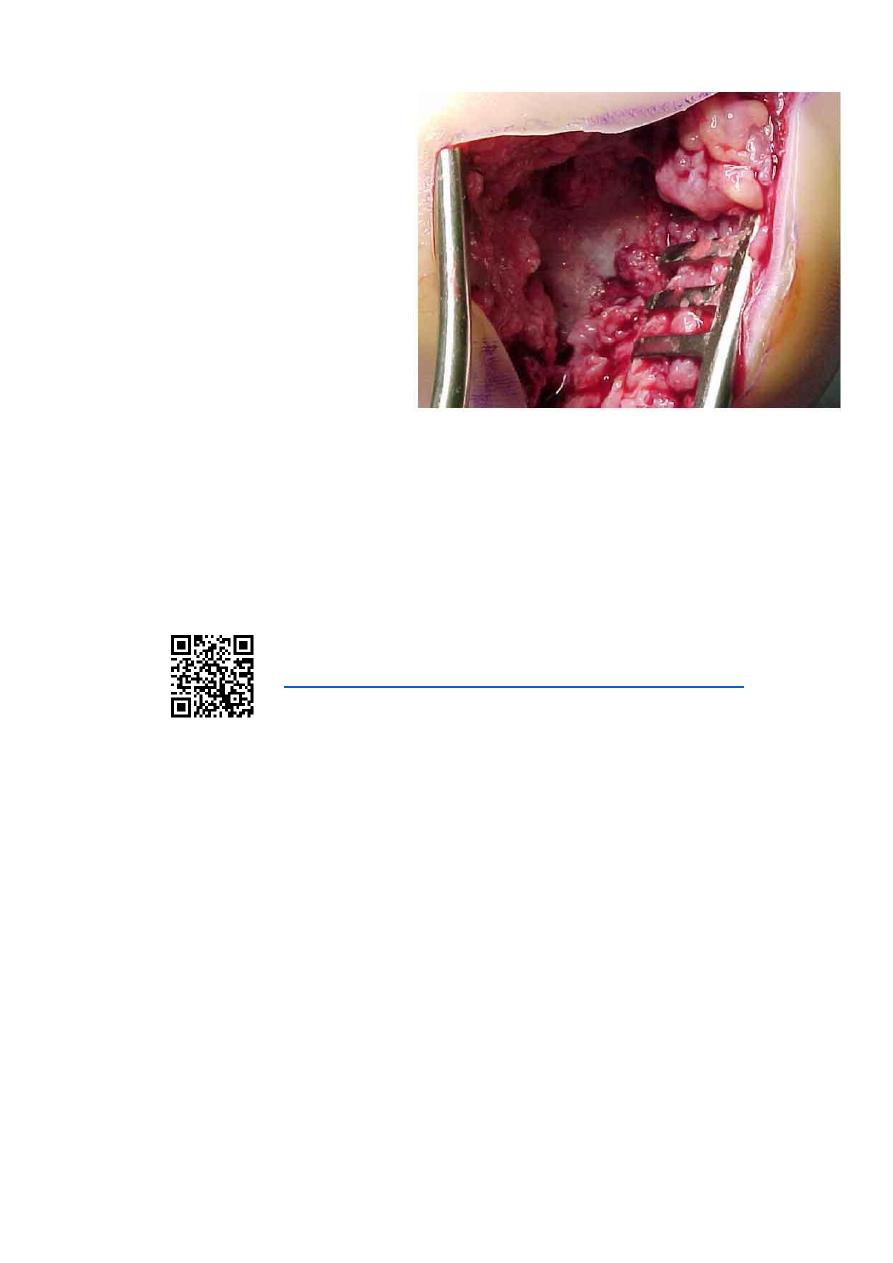
12
Complication
• Spread septicemia.
• Persistant infection (chronic).
• Growth disturbance shortening
or deformity.
. suppurative arthritis:
(in young children in
intracapsular metaphysis.).
https://www.muhadharaty.com/lecture/13442
